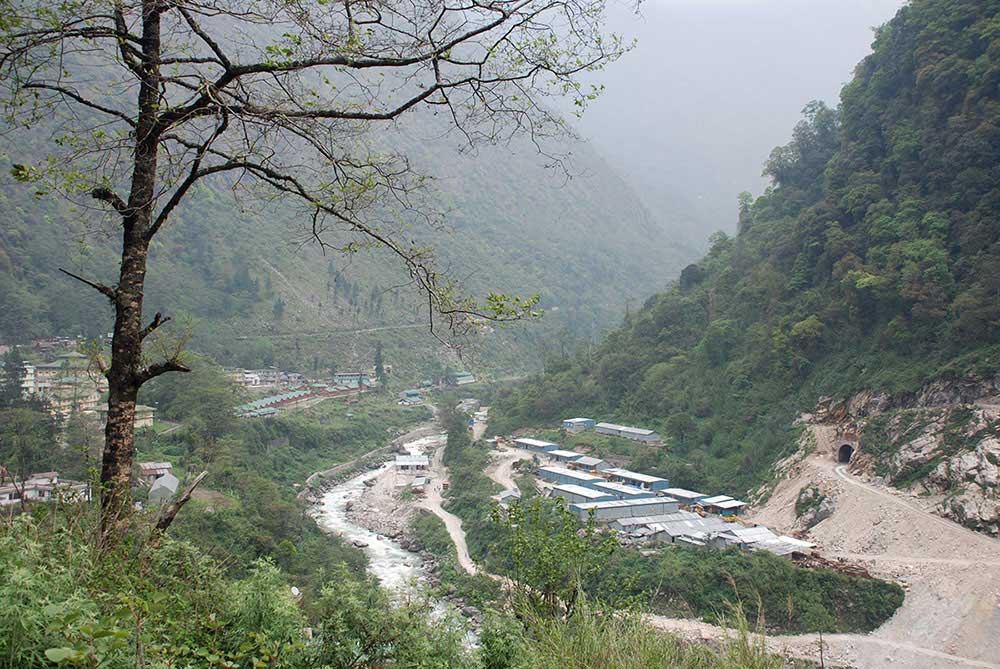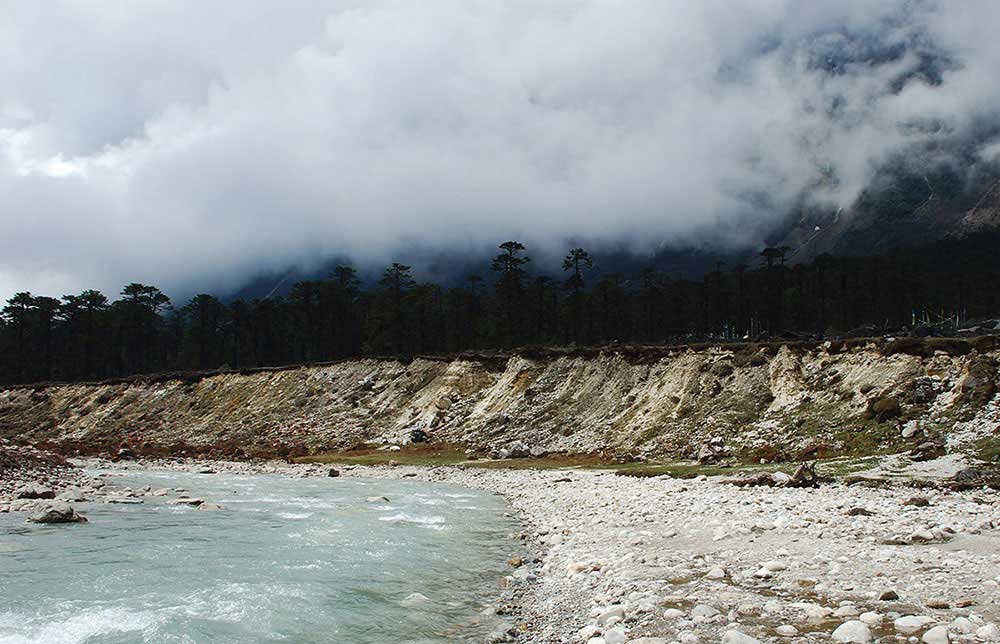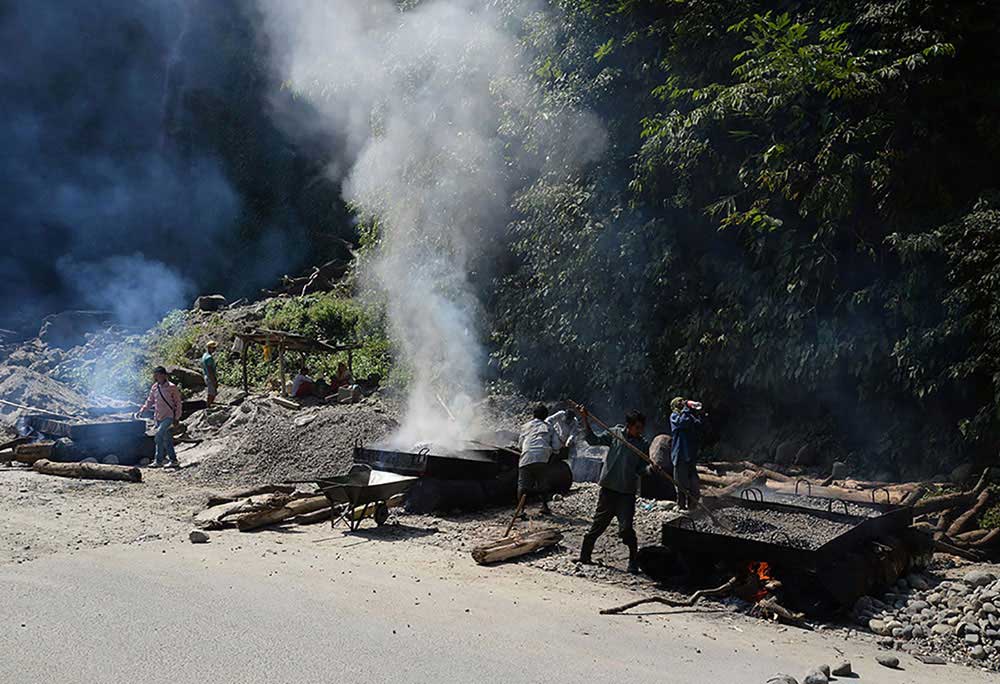The Himalayas are a mountain range in Asia, separating the Indian subcontinent from the Tibetan plateau. This is also, by definition, the name of the vast mountain chain, which comprises the Himalayas, the Karakoram, the Hindu Kush, and a number of small ranges ranging from the Pamir Knot.
The name is from Sanskrit himālaya, a tatpurusa compound meaning “the abode of snow” (from Hima “snow”, and ālaya “abode). The Himalayas stretch across six nations: Bhutan, China, India, Nepal, Pakistan and Afghanistan. It is spread across ten administrative States of India, namely Jammu & Kashmir, Himachal Pradesh, Uttaranchal, Sikkim, Arunachal Pradesh, Meghalaya, Nagaland, Manipur, Mizoram, Tripura and two hill regions of Assam and West Bengal.
The Himalayan terrain, say geologists, is especially vulnerable to landslides. The mountain range was formed by the collision of the Indian and Eurasian plates. The northward movement of the Indian plate creates constant stress on the rocks, making them friable, brittle and vulnerable to landslides and earthquakes. The latitudinal variations in the Himalayas are greater in the Eastern half than those in the Western half. That is why the eastern region of the Himalayas mostly facing landslides. But it is man-made factors that have compounded the scale of the disaster. Sure, human activity may be a contributing factor in triggering landslides in certain situations. Most human-caused landslides can be prevented or mitigated. They are commonly the result of building roads and structures, especially hydropower projects, without adequate slope grading, poorly planned alteration of drainage patterns, increasing urbanisation and deforestation. Uncontrolled tourism business is also responsible for the collapse of the Himalayas.
The impacts of climate change on the Himalayas are significant. The melting of glaciers, extreme and volatile weather conditions, shifting rainfall patterns and increasing temperatures are affecting the people and wildlife of the area. Extreme precipitation events are likely to become more frequent in the future as the climate warms, and in some areas this may lead to a higher level of landslide activity. According to the report, climate change would lead to more extreme and regular rainfall. More landslides will put downstream communities at risk, as millions of people downstream depend on the major rivers that originate from these mountains. Humans are increasingly influencing the climate and the earth’s temperature by burning fossil fuels, cutting down rainforests and farming livestock. This adds enormous amounts of greenhouse gases to those naturally occurring in the atmosphere, increasing the greenhouse effect and global warming.
It is one of my long-term projects. For this project, I have travelled extensively to various part of the Himalaya in Nepal, Bhutan and India. Basically, through this project I have tried to show the role of human beings in landslides. The impact of a landslide can be extensive, including loss of life, destruction of infrastructure, damage to the land and loss of natural resources. Landslide material can also block rivers and increase the risk of floods.
About Sirsendu Gayen
Sirsendu Gayen, an Assistant Professor in Chemistry at Vivekananda College, Kolkata, has been a passionate amateur photographer since 2006. Photography is his way of feeling, touching and sharing the freedom that he sees through the lens. He enjoys shooting different subjects with specific interest in travel, architecture, Nature, fine art and people to capture the spirit of Mother Earth.
He started photography seriously in 2009 when he got a DSLR (Nikon D80) from his elder brother. After three years extensively using the camera, he shifted to a Nikon D610. This is a very precious one for him as it was gifted by his mother. He used both these cameras very comprehensively until the end of January 2019. After that, He became a proud owner of a Nikon D750 – which was also a gift; this time with his wife. He is currently using the Nikon D750 and Nikon D7200.
He always relies on the philosophy that practice makes one perfect. Not all of us are born with perfection, but we try our best to be perfect. He always remembers the quote by Colin Powell: A dream doesn’t become a reality through magic; it takes sweat, determination, and hard work. This passion led him to achieve many national and international awards and more than 400 of his photographs have been exhibited in various national and international exhibitions. His work has also appeared in Asian Geographic Magazine (Singapore), Amateur Photographer Magazine UK, National Geographic USA(Online), National Geographic Traveller Magazine India, Lonely Planet Traveller UK, Lonely Planet Asia, Lonely Planet India, Outlook Traveller, Photo life Magazine Canada, Digital Camera World UK, N- Photo Magazine UK, , Smart Photography Magazine (India), Better Photography (India), Edge of Humanity Magazine ( Online), 121Clicks.com,Times of India ( Kolkata Edition ) and numerous other publications.























